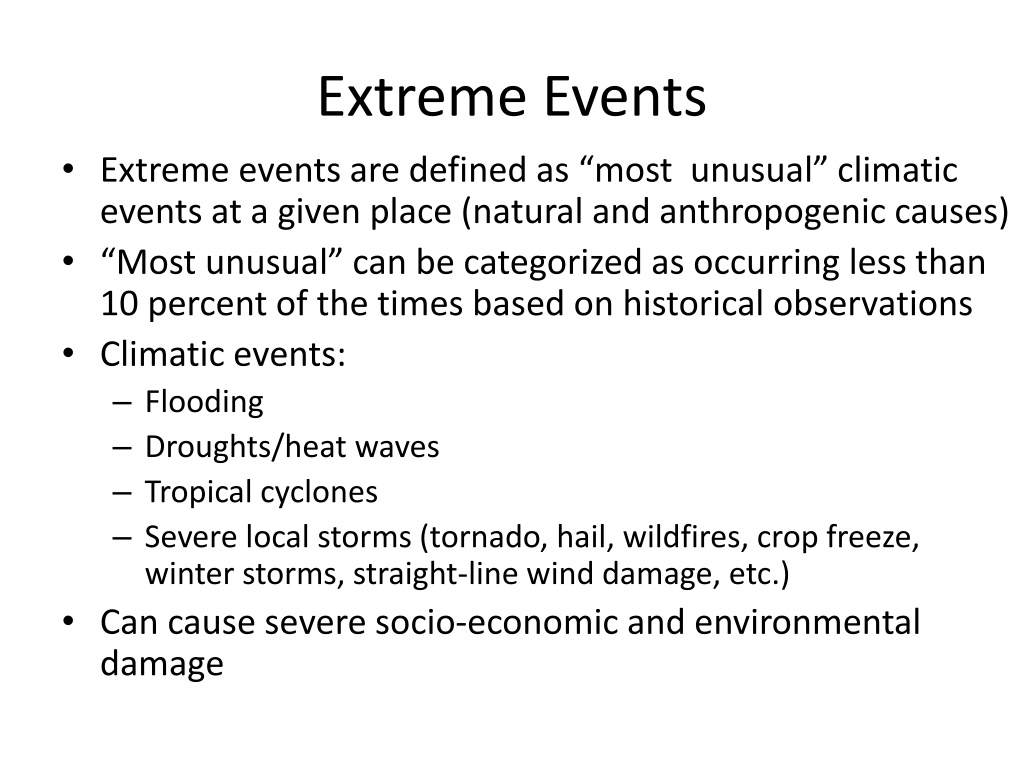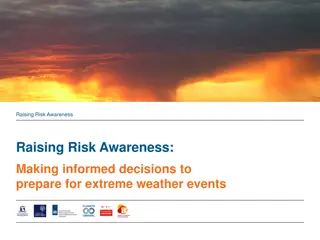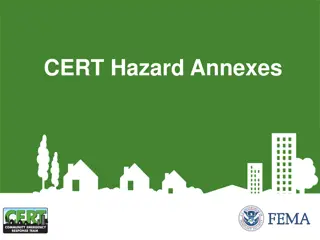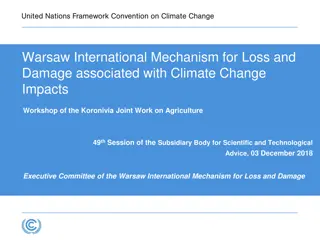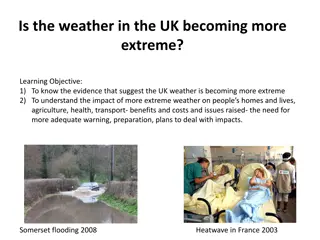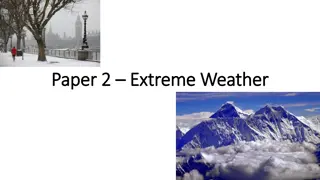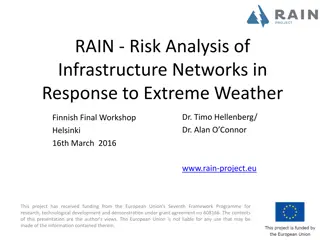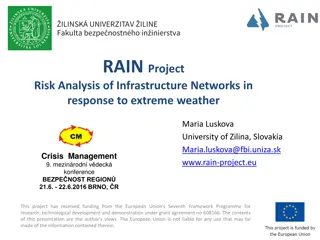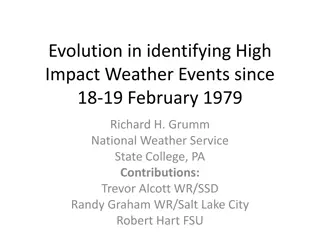Extreme Events
Extreme events, such as floods and droughts, can have devastating effects on communities and ecosystems. Learn about flood magnitudes, frequency analysis, and precipitation depths to better understand and prepare for these occurrences. Explore images and data on the topic.
Download Presentation

Please find below an Image/Link to download the presentation.
The content on the website is provided AS IS for your information and personal use only. It may not be sold, licensed, or shared on other websites without obtaining consent from the author.If you encounter any issues during the download, it is possible that the publisher has removed the file from their server.
You are allowed to download the files provided on this website for personal or commercial use, subject to the condition that they are used lawfully. All files are the property of their respective owners.
The content on the website is provided AS IS for your information and personal use only. It may not be sold, licensed, or shared on other websites without obtaining consent from the author.
E N D
Presentation Transcript
Extreme Events Extreme events are defined as most unusual climatic events at a given place (natural and anthropogenic causes) Most unusual can be categorized as occurring less than 10 percent of the times based on historical observations Climatic events: Flooding Droughts/heat waves Tropical cyclones Severe local storms (tornado, hail, wildfires, crop freeze, winter storms, straight-line wind damage, etc.) Can cause severe socio-economic and environmental damage
What is flood? Excess water caused by heavy rains and/or rapid snowmelt Usually happens on a flat or low-lying areas when the ground is saturated and water cannot run off quickly or not at all Types: areal, riverine, estuarine and coastal, urban, catastrophic Look at some pictures from: https://en.wikipedia.org/wiki/Flood
Magnitude-Frequency Analysis for Flood Direct observations of stream flow can be used for magnitude- frequency analysis Frequency of floods are useful information in designing water resources infrastructures. For example, a flood of 5 to 10 yr. frequency (or return period) is used in the design of highway culvers for low traffic. Similarly: Culverts (high-traffic): 50-100 yrs. RP Highway bridge: 10-100 yrs. RP Dam: 50-100 yrs. RP Urban drainage: 2-25 yrs. (small cities) and 25-50 yrs. (large cities)
Flood Frequency Analysis Best fit line (normally fitted using Log-Pearson Type III Distribution) 1. What is the magnitude of flood that has a return period of 50-years? 2. What is the frequency of a flood with a magnitude of 45,000 cfs?
DDF: Depth Duration Frequency curves Generated from http://hdsc.nws.noaa.gov for Greensboro, North Carolina What is the precipitation depth for a 12-hr. duration storm that is exceeded on average once in in 25 years (return period = 25 years)?
IDF: Intensity Duration Frequency curves Generated from http://hdsc.nws.noaa.gov for Greensboro, North Carolina What is the intensity of precipitation of 12-hr. duration that has a 25-year return period?
What is drought? Deficiency of rain (low to none) for an extended period of time Look at some pictures from: https://en.wikipedia.org/wiki/Drought
Drought Characteristics Droughts are among the most costly weather-related events in terms of economics and loss of life Key aspects of drought: severity, duration, time of occurrence and spatial extent Defined in a different number of ways: Meteorological drought: Deficit in precipitation; It represents degree of dryness compared to the average condition and duration of the dry period Agricultural drought: Deficit in soil moisture; It precedes precipitation deficit (meteorological drought); Reduce agricultural production due to lack of water for irrigation; Increase wildfires Hydrological drought: Deficit in surface and ground water; Impacts water supply for drinking water, irrigation, industrial needs, hydropower, etc.; Significant societal impact
